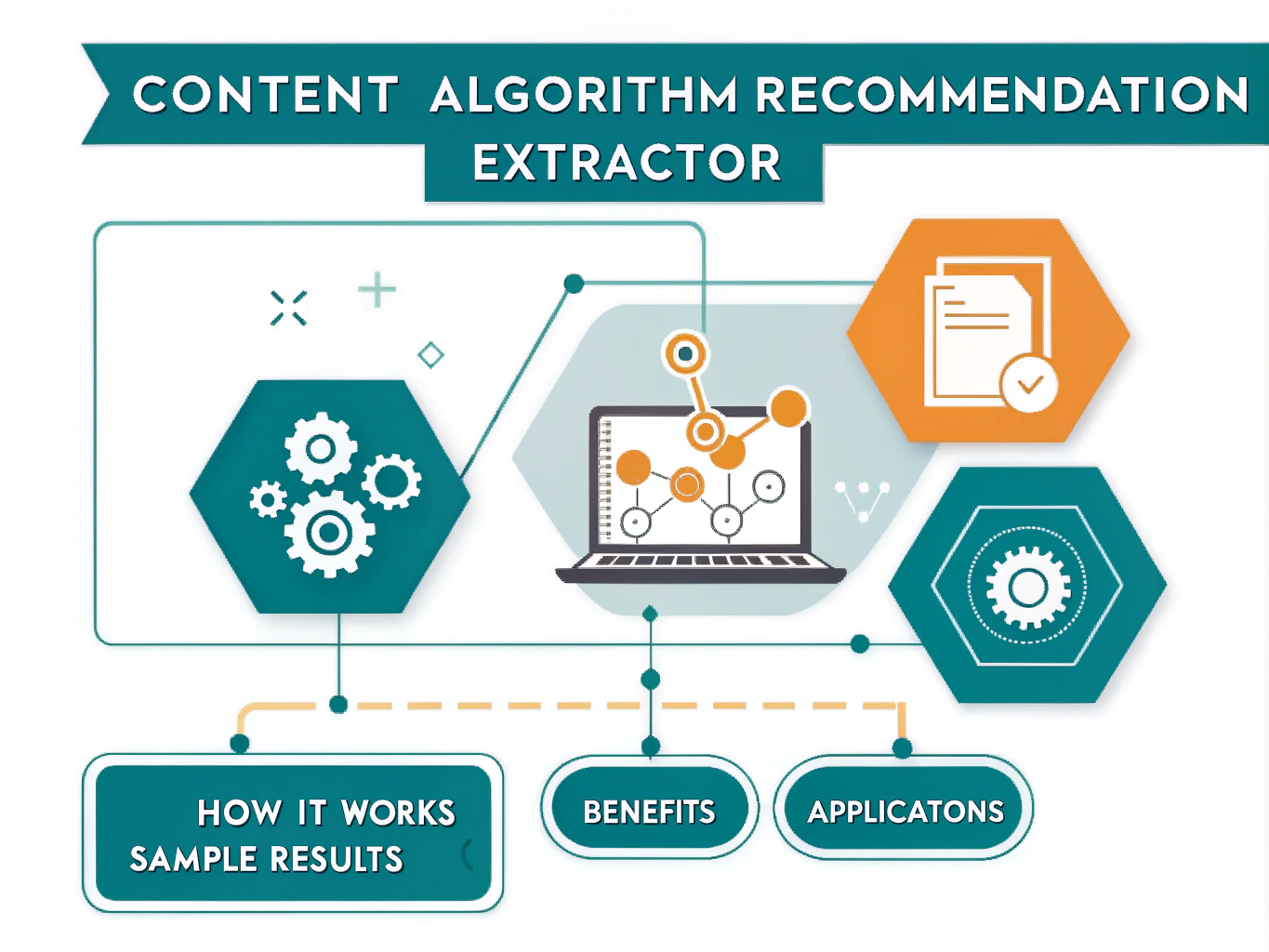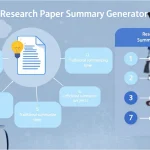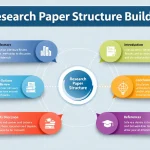Is this tool helpful?
How to Use the Content Algorithm Recommendation Extractor Effectively
To make the most of our Content Algorithm Recommendation Extractor, follow these simple steps:
- Enter your content: In the provided textarea, paste or type the content from which you want to extract algorithm recommendations. For example, you could input a blog post about productivity techniques or a research paper on machine learning algorithms.
- Submit the form: Click the “Extract Recommendations” button to process your input and generate algorithm update recommendations.
- Review the results: The tool will display up to three concise, practical recommendations based on your input. Each recommendation will be no more than 15 words long.
- Copy the results: Use the “Copy to Clipboard” button to easily save and share the extracted recommendations.
Let’s look at two sample inputs to better understand how to use this tool:
Sample Input 1: Productivity Blog Post
“Recent studies have shown that multitasking reduces productivity by up to 40%. Instead, try focusing on one task at a time using the Pomodoro Technique. Set a timer for 25 minutes, work intensely on a single task, then take a 5-minute break. Repeat this cycle four times, then take a longer 15-30 minute break.”
Sample Input 2: Machine Learning Research Paper
“Our experiments demonstrate that incorporating transfer learning techniques in natural language processing tasks can significantly improve model performance, especially in low-resource scenarios. By fine-tuning pre-trained language models on domain-specific data, we observed a 15% increase in accuracy across various NLP benchmarks.”
Introduction to the Content Algorithm Recommendation Extractor
The Content Algorithm Recommendation Extractor is a powerful tool designed to analyze your content and provide actionable, algorithm-based recommendations to improve your processes, strategies, or methodologies. This innovative tool leverages advanced natural language processing techniques to extract valuable insights from your input, distilling complex information into concise, practical suggestions.
Whether you’re a content creator, researcher, or business professional, this tool can help you identify key areas for improvement and optimization in your work. By analyzing the underlying patterns and concepts in your content, the extractor generates targeted recommendations that can enhance your productivity, efficiency, and overall performance.
Benefits of Using the Content Algorithm Recommendation Extractor
Incorporating the Content Algorithm Recommendation Extractor into your workflow offers numerous advantages:
- Time-saving: Quickly extract valuable insights from lengthy documents or complex content without manual analysis.
- Actionable suggestions: Receive practical, easy-to-implement recommendations to improve your processes or strategies.
- Objective analysis: Benefit from an unbiased, algorithm-driven approach to identifying areas for improvement.
- Versatility: Apply the tool to various types of content, from blog posts and articles to research papers and business reports.
- Continuous improvement: Regularly use the tool to refine and optimize your work based on the latest best practices and insights.
- Enhanced creativity: Gain new perspectives and ideas by analyzing your content from different angles.
- Improved decision-making: Make informed choices based on data-driven recommendations extracted from your content.
Addressing User Needs and Solving Specific Problems
The Content Algorithm Recommendation Extractor addresses several common challenges faced by professionals across various industries:
1. Information Overload
In today’s digital age, we’re bombarded with vast amounts of information. This tool helps cut through the noise by distilling key insights and recommendations from your content, saving you time and mental energy.
2. Blind Spots in Analysis
Even experienced professionals can develop blind spots when analyzing their own work. The extractor provides an objective, algorithm-driven perspective that can identify areas for improvement you might have overlooked.
3. Difficulty in Prioritizing Improvements
With limited time and resources, it can be challenging to decide which aspects of your work to focus on improving. The tool’s concise recommendations help you prioritize the most impactful changes.
4. Keeping Up with Best Practices
As industries evolve, staying current with the latest best practices can be overwhelming. The Content Algorithm Recommendation Extractor analyzes your content against current trends and methodologies, ensuring your work remains up-to-date and competitive.
5. Lack of Actionable Feedback
Generic advice often lacks the specificity needed for meaningful improvement. This tool provides tailored, actionable recommendations based on your unique content, making it easier to implement positive changes.
Example Calculations and Tool Usage
Let’s explore some example scenarios to illustrate how the Content Algorithm Recommendation Extractor can be applied in various contexts:
Example 1: Marketing Strategy Document
Input:
“Our current social media strategy focuses on posting content three times a week across all platforms. We’ve noticed that engagement rates are highest on Tuesdays and Thursdays, but we haven’t adjusted our posting schedule to reflect this data. Additionally, we’ve been using the same hashtags for the past six months without reviewing their performance or exploring new trending tags in our industry.”
Extracted Recommendations:
- Optimize social media posting schedule to prioritize Tuesdays and Thursdays for maximum engagement.
- Implement a monthly review of hashtag performance and update strategy with trending industry tags.
- Experiment with different content types on high-engagement days to further boost interaction rates.
Example 2: Software Development Process Document
Input:
“Our current software development lifecycle follows a traditional waterfall approach. We complete all planning and design phases before moving on to implementation. Quality assurance testing is performed at the end of the development cycle, often leading to delays when issues are discovered. We have a separate team for maintenance and bug fixes, which sometimes struggles to understand the context of the original development decisions.”
Extracted Recommendations:
- Transition to an Agile development methodology to improve flexibility and reduce end-of-cycle delays.
- Implement continuous integration and automated testing throughout the development process to catch issues early.
- Integrate maintenance team members into development sprints to improve knowledge transfer and context understanding.
Practical Applications of the Content Algorithm Recommendation Extractor
The versatility of this tool makes it valuable across various industries and use cases. Here are some practical applications to consider:
1. Content Creation and Marketing
- Blog post optimization: Analyze your draft posts to identify areas for improvement in structure, SEO, or engagement strategies.
- Social media strategy: Extract recommendations to enhance your social media content plan and improve audience engagement.
- Email marketing: Optimize your email campaigns by analyzing past performance data and extracting actionable insights.
2. Business Strategy and Operations
- Process improvement: Analyze documentation of current business processes to identify inefficiencies and areas for optimization.
- Competitive analysis: Extract key recommendations from market research reports to inform your competitive strategy.
- Employee training: Enhance training materials by identifying areas where additional guidance or updated information is needed.
3. Research and Academia
- Literature review: Quickly extract key recommendations from multiple research papers to guide your study design or methodology.
- Grant proposals: Analyze successful grant applications to identify effective strategies for your own proposals.
- Curriculum development: Extract recommendations from student feedback and learning outcome data to improve course content and delivery.
4. Software Development
- Code review: Analyze code review comments and documentation to extract recommendations for improving coding practices.
- User experience design: Extract insights from user feedback and usability testing reports to enhance product design.
- Project management: Analyze post-mortem reports from past projects to identify areas for process improvement in future endeavors.
5. Personal Development
- Goal setting: Extract recommendations from your personal journal entries or reflections to set more effective goals.
- Skill improvement: Analyze feedback from mentors or performance reviews to identify key areas for professional growth.
- Time management: Extract insights from your daily logs or time-tracking data to optimize your personal productivity.
Frequently Asked Questions (FAQ)
Q1: How does the Content Algorithm Recommendation Extractor work?
A1: The extractor uses advanced natural language processing techniques to analyze your input content, identify key concepts and patterns, and generate concise, actionable recommendations based on the information provided.
Q2: Can I use this tool for any type of content?
A2: Yes, the Content Algorithm Recommendation Extractor is designed to work with various types of content, including blog posts, articles, research papers, business reports, and more. However, the quality of recommendations may vary depending on the specificity and relevance of the input content.
Q3: How many recommendations does the tool provide?
A3: The tool generates up to three concise recommendations, each limited to 15 words or less. This ensures that the output is focused and actionable.
Q4: Can I customize the type of recommendations I receive?
A4: Currently, the tool doesn’t offer customization options for the type of recommendations. However, the recommendations are tailored to the specific content you provide, ensuring relevance to your input.
Q5: How often should I use this tool?
A5: The frequency of use depends on your specific needs and the nature of your work. You might use it for every major piece of content you create, or periodically (e.g., monthly or quarterly) to review and optimize your ongoing processes and strategies.
Q6: Can I integrate this tool with other software or platforms?
A6: The current version is a standalone web-based tool. For integration possibilities, please contact our support team to discuss your specific requirements.
Q7: How can I ensure the best results from the Content Algorithm Recommendation Extractor?
A7: To get the most valuable recommendations, provide clear, detailed, and relevant input. The more specific and comprehensive your content, the better the tool can generate targeted and actionable suggestions.
Q8: Are the recommendations generated by AI or human experts?
A8: The recommendations are generated by an AI algorithm trained on vast amounts of data and best practices. While not created by human experts in real-time, the algorithm’s knowledge base is derived from expert knowledge and continuously updated industry insights.
Q9: Can I save or export the recommendations?
A9: Yes, you can easily copy the recommendations to your clipboard using the “Copy to Clipboard” button provided in the results section. From there, you can paste and save the recommendations in your preferred document or note-taking application.
Q10: Is there a limit to the amount of content I can input?
A10: The tool is designed to handle various content lengths. However, for optimal performance and more focused recommendations, we suggest keeping your input concise and to the point, focusing on the specific area you want to improve.
Conclusion
The Content Algorithm Recommendation Extractor is a powerful ally in your quest for continuous improvement and optimization. By leveraging advanced natural language processing techniques, this tool provides you with valuable, actionable insights derived from your own content. Whether you’re a content creator, business professional, researcher, or anyone looking to enhance their work, this extractor can help you identify key areas for improvement and guide you towards more effective strategies and processes.
Remember that the quality of the recommendations depends largely on the input you provide. Be specific, clear, and comprehensive in your content to receive the most relevant and impactful suggestions. Use this tool regularly as part of your workflow to stay ahead of the curve, continuously refine your approaches, and drive innovation in your field.
By incorporating the Content Algorithm Recommendation Extractor into your toolkit, you’re taking a significant step towards data-driven decision-making and evidence-based improvement. Embrace the power of algorithmic analysis to unlock new insights, overcome challenges, and achieve excellence in your work. Start extracting valuable recommendations today and watch as your productivity, efficiency, and overall performance reach new heights!
Important Disclaimer
The calculations, results, and content provided by our tools are not guaranteed to be accurate, complete, or reliable. Users are responsible for verifying and interpreting the results. Our content and tools may contain errors, biases, or inconsistencies. We reserve the right to save inputs and outputs from our tools for the purposes of error debugging, bias identification, and performance improvement. External companies providing AI models used in our tools may also save and process data in accordance with their own policies. By using our tools, you consent to this data collection and processing. We reserve the right to limit the usage of our tools based on current usability factors. By using our tools, you acknowledge that you have read, understood, and agreed to this disclaimer. You accept the inherent risks and limitations associated with the use of our tools and services.







